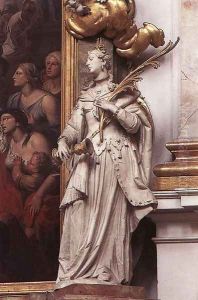Johann Baptist Straub Paintings
Johann Baptist Straub was a German Rococo sculptor, born in 1704 in Wiesensteig, a small town in the Duchy of Bavaria. He came from a family with a strong artistic tradition; his father, Thomas Straub, was also a renowned sculptor. This familial background provided Johann Baptist with a solid foundation in the arts from an early age.
Straub received his initial training from his father and later moved to Munich to further his studies and work. He became one of the prominent sculptors of his time in Southern Germany, contributing significantly to the Rococo style's development in the region. His work was characterized by its dynamic forms, expressive figures, and detailed craftsmanship, which were hallmarks of the Rococo aesthetic.
In Munich, Straub achieved considerable success and was commissioned to create altarpieces, pulpits, and statues for numerous churches in Bavaria. One of his most significant works is the high altar of the Church of St. Johann Nepomuk, better known as the Asam Church, in Munich. Straub's sculptures often depicted religious scenes and figures, imbued with a sense of movement and emotional depth that made them come alive.
Throughout his career, Johann Baptist Straub collaborated with other artists and architects, contributing to the interiors of churches and palaces with his elaborate and sophisticated wood carvings. His work was not limited to religious subjects; he also produced secular sculptures that reflected the playful and ornamental spirit of the Rococo.
Straub's influence extended beyond his lifetime, as his style and techniques were carried on by his students and his son, Franz Xaver Straub, who was also a sculptor. Johann Baptist Straub died in 1784 in Munich, leaving behind a legacy of artistic achievements that are still admired for their vitality and elegance within the Rococo tradition. His contributions to the art of Southern Germany remain an important part of the region's cultural heritage.
